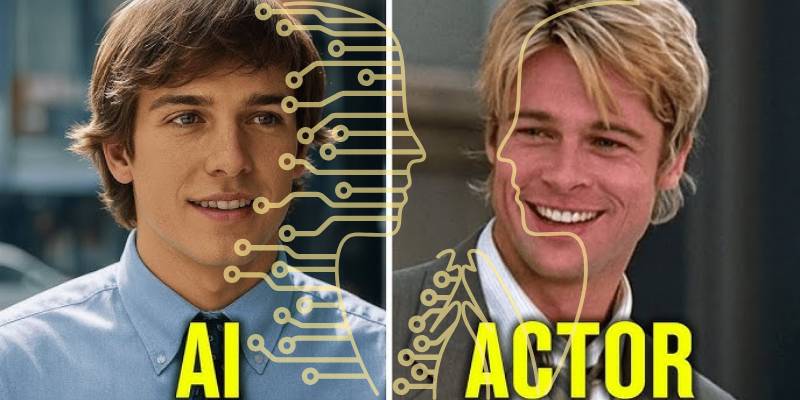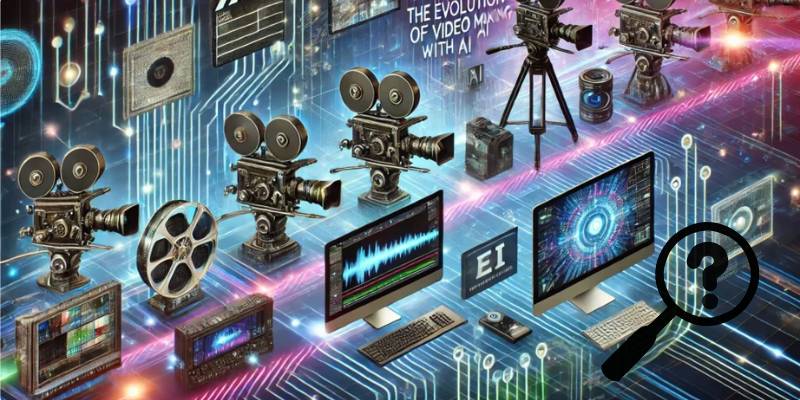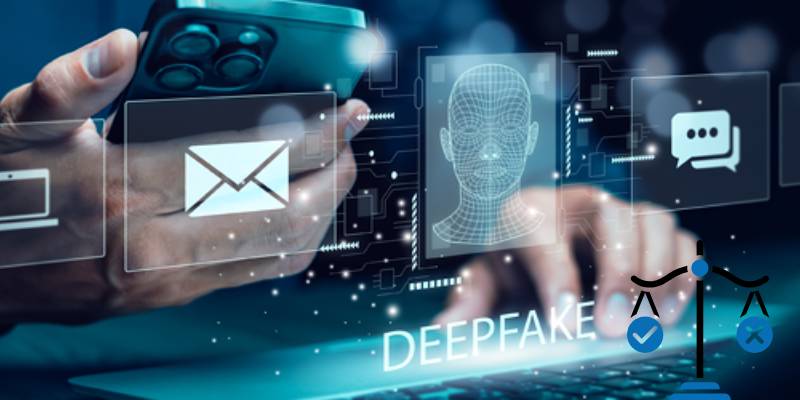Not long ago, the idea of seeing a completely digital “actor” on screen, one who never ages, never forgets their lines, and never complains about a long shoot day, would have sounded like science fiction.
Yet here we are. AI-generated performers—lifelike digital avatars powered by machine learning—are no longer experimental novelties. They’re being used in ads, training videos, and even films.
But here’s the big question: can they truly replace human performers? And even if they can, should they?
This is where the conversation gets messy, emotional, and deeply human. On one side, AI actors promise efficiency, lower costs, and infinite scalability.
On the other, real performers bring vulnerability, spontaneity, and a spark of authenticity that no algorithm has yet managed to replicate.
This article explores both sides of the debate: the technology, the opportunities, and the risks. And, yes, the uncomfortable truths about what it means for creativity, culture, and the people who make their living in front of the camera.
Chapter 1: The Rise of AI-Generated Actors
AI-generated actors aren’t just CGI characters—they’re full-blown avatars created using deep learning, generative adversarial networks (GANs), and motion-capture data. Tools like Synthesia, DeepBrain AI, and MetaHuman are already producing avatars that can deliver corporate presentations, training modules, and product demos.
In advertising, “virtual influencers” like Lil Miquela (who has millions of Instagram followers) have blurred the line between fiction and reality. According to a 2022 HypeAuditor report, engagement rates for virtual influencers were three times higher than for human influencers.
So the technology is not only advancing—it’s catching on with audiences.
Chapter 2: Why Studios and Brands Are Interested
It’s not hard to see why studios and businesses are drawn to AI performers:
- Cost savings: No travel, no hotels, no reshoots.
- Scalability: One avatar can speak 30 languages in a single campaign.
- Control: AI actors don’t demand script rewrites or union contracts.
- Consistency: An AI avatar looks the same in 2023 as in 2043.
For companies looking to produce content at scale—especially marketing and training videos—the appeal is undeniable.
But here’s my worry: when efficiency becomes the driving force, do we lose sight of what makes performance art, not just delivery?
Chapter 3: The Human Touch—Why Real Performers Still Matter
Actors aren’t just people reading lines. They interpret. They improvise. They add pauses that weren’t in the script, or deliver a look that wasn’t written but makes a scene unforgettable.
Think of Robin Williams in Good Will Hunting, Heath Ledger in The Dark Knight, or Viola Davis in Fences. Their performances weren’t just technically correct—they were raw, unpredictable, human.
This is where the tension of creativity vs authenticity comes in. AI can mimic authenticity, but can it be authentic? So far, no. And maybe never.
Chapter 4: Ethical Deepfake Concerns
Of course, there’s a darker side: ethical deepfake concerns.
When you can generate a hyper-realistic likeness of anyone, living or dead, the potential for abuse skyrockets. We’ve already seen unauthorized deepfakes of celebrities in inappropriate contexts. In politics, deepfakes have been used to spread misinformation.
The Brookings Institution warned in 2021 that deepfakes could “erode trust in media, amplify misinformation, and destabilize democratic processes.”
It’s not just about replacing actors—it’s about whether we can still believe what we see on screen at all.
Chapter 5: The Legal Protection Debate
This leads to the legal protection debate. Who owns the likeness of an actor once it’s digitized? Can a studio reuse an actor’s AI replica indefinitely, even after they’ve passed away?
In 2023, the Screen Actors Guild (SAG-AFTRA) raised alarms about contracts that attempted to secure lifelong digital rights from actors. The union argued that without strong protections, performers could lose control over their image and voice.
This isn’t hypothetical—it’s already happening. In 2021, the late Anthony Bourdain’s voice was recreated using AI for a documentary, sparking backlash from fans and ethical questions about consent.
My opinion? The law is lagging far behind the technology. And unless performers’ rights are explicitly protected, studios will push the boundaries until forced to stop.
Chapter 6: Synthetic Reality Risks
We also need to talk about the psychological impact of living in a world where synthetic reality risks are everywhere.
If audiences can no longer tell whether a face on screen is real, what happens to our trust? What happens to our ability to connect emotionally with art?
A 2023 Pew Research study found that 79% of Americans are concerned about deepfakes being used for malicious purposes. That distrust bleeds into entertainment too. If everything looks “too perfect,” we start to disengage.
I worry about a future where synthetic performances saturate the market, making real, flawed, human performances feel rare—or worse, irrelevant.
Chapter 7: Where AI Actors Shine
That said, AI actors do have a place. In some contexts, they might even be the better option.
- Corporate training: A consistent avatar delivering safety instructions.
- Language learning: An AI tutor who can switch seamlessly between accents.
- Marketing at scale: Dozens of product demos in multiple languages produced in hours.
- Historical education: Bringing historical figures “to life” in museums or classrooms.
These are practical, useful, even exciting applications where AI complements rather than replaces real performers.
Chapter 8: Audience Reception—What Do People Want?
Do audiences actually care whether an actor is real or AI? That depends.
In advertising, most people probably don’t mind. In film, it’s more complicated. A 2022 Morning Consult survey showed that 64% of U.S. adults were uncomfortable with the idea of AI recreating deceased actors in movies.
So while the novelty of AI actors intrigues people, there’s still resistance when it feels like a replacement rather than an enhancement.
Chapter 9: Creativity vs Authenticity—The Core Dilemma
This is the heart of it. AI can replicate, but can it originate?
I’ve seen AI-generated performances that look eerily real, but they still feel hollow—like a wax figure mimicking life. There’s no personal history behind the eyes, no lived experience to draw from.
That’s why creativity vs authenticity is such a crucial frame for this debate. Audiences crave stories that reflect the complexity of human experience. AI can assist in telling those stories, but can it embody them? I’m not convinced.
Chapter 10: My Personal Take
I’ll admit it: part of me is fascinated by AI actors. The technology is astonishing, and in certain contexts, it solves real problems.
But another part of me feels uneasy. Acting isn’t just about efficiency—it’s about empathy. It’s about channeling life into art. And I don’t think any algorithm, no matter how advanced, can truly feel or express what it means to be human.
So where do we draw the line? For me, it’s this: let AI handle the functional roles—training videos, scalable content—but leave storytelling, art, and culture to human performers. Otherwise, we risk hollowing out the very thing that makes performance meaningful.
Chapter 11: Looking Ahead
Here’s where I think we’re headed:
- Hybrid productions: Films mixing real performers with AI-generated background actors.
- Digital doubles: Actors licensing AI replicas for stunts, dubbing, or localized campaigns.
- Stronger laws: Legal frameworks catching up to protect performer rights.
- Consumer choice: Audiences demanding transparency about what’s real and what’s AI.
The industry won’t swing entirely to AI or entirely stay human—it’ll be a messy mix of both. And the tension between efficiency and authenticity will shape entertainment for years to come.
Conclusion
AI-generated actors are no longer a novelty—they’re here. But the question isn’t just whether they can replace real performers. It’s whether they should.
From the legal protection debate to ethical deepfake concerns, from the allure of machine-made efficiency to the dangers of synthetic reality risks, this isn’t just a technological issue—it’s a cultural one.
And my opinion? Let AI support, not replace. Let it handle the scalable, functional, repetitive roles. But let real performers—the messy, brilliant, imperfect humans—continue to tell the stories that remind us of who we are.
Because in the end, acting isn’t just about looking real. It’s about being real. And that’s something no machine can ever fully capture.


